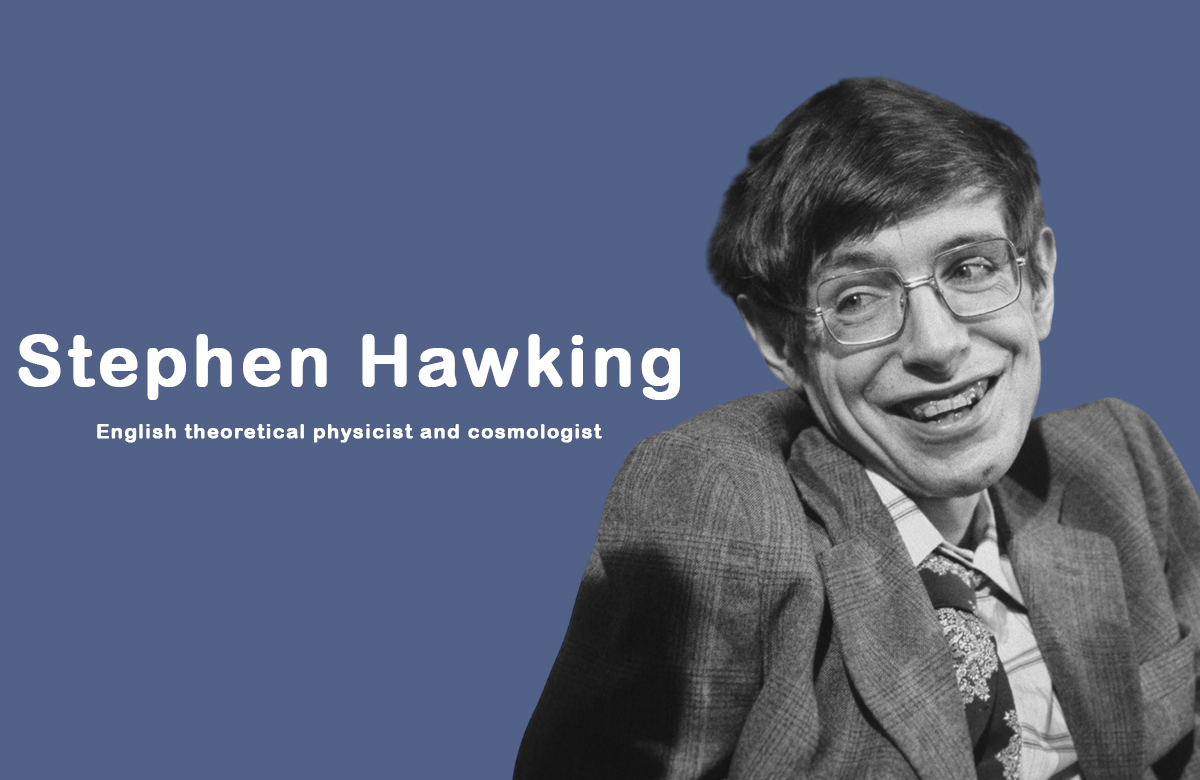At 21 years old, Stephen Hawking was diagnosed with ALS (amyotrophic lateral sclerosis) — a progressive disease that slowly paralyzed him and left doctors predicting he had just a few years to live.
But instead of giving up, Hawking did the unthinkable: he used his mind to explore the deepest mysteries of the cosmos — black holes, time, gravity, and the origin of the universe.
Despite being confined to a wheelchair and eventually communicating only through a speech-generating device, Hawking became one of the most influential scientists of the 20th and 21st centuries.
This is the extraordinary story of how Stephen Hawking turned physical limitation into intellectual liberation — proving that the human spirit can soar even when the body cannot.
Early Life & Academic Brilliance
A Mind Built for the Cosmos
Born on January 8, 1942, in Oxford, England — exactly 300 years after Galileo’s death — Stephen William Hawking showed early signs of genius.
He studied physics at University College, Oxford, and later pursued cosmology at Cambridge University.
Even as a young student, he stood out:
- Known for his sharp intellect and unconventional thinking
- Asked bold questions about the universe
- Was fascinated by black holes and the Big Bang
But just as his academic journey began, his life took a dramatic turn.
Diagnosis That Changed Everything
ALS at 21 – A Life Sentence?
At age 21, Hawking began experiencing symptoms — slurred speech, clumsiness — and was diagnosed with ALS, a neurodegenerative disease that attacks nerve cells controlling movement.
Doctors gave him two to three years to live.
Devastated, Hawking fell into depression — but found renewed purpose through love and ambition.
He once said:
Although there was nothing particular to live for, I suddenly realized there was everything to live for.
He married Jane Wilde, focused on his research, and decided to fight for every moment.
Scientific Breakthroughs Against All Odds
Redefining Black Holes and the Universe
Despite worsening paralysis, Hawking made groundbreaking contributions to physics:
- Hawking Radiation (1974)
- Proved that black holes are not completely black — they emit radiation and eventually evaporate
- Merged Einstein’s theory of relativity with quantum mechanics
- Revolutionized how scientists understand black holes
- Singularity Theorems
- Worked with Roger Penrose to show that the universe began as a singularity — a point of infinite density
- Provided mathematical support for the Big Bang theory
- Popularizing Science
- Wrote “A Brief History of Time” (1988) — a book that made complex science accessible to millions
- Sold over 25 million copies worldwide
- Became a global bestseller despite its challenging subject matter
Living with Technology
A Voice Beyond Speech
By the late 1980s, Hawking had lost the ability to speak after a tracheotomy. But technology gave him a new voice.
He used a speech-generating device developed by Intel and other engineers:
- Controlled by cheek muscle movements
- Translated brainpower into words
- Allowed him to lecture, write, and interact globally
His robotic voice became iconic — a symbol of human resilience and technological empowerment.
Public Figure & Cultural Icon
From Scientist to Superstar
Hawking didn’t just stay in labs — he entered popular culture:
- Appeared on The Simpsons, Star Trek: TNG, and The Big Bang Theory
- Narrated documentaries and gave public lectures
- Advocated for science, space exploration, and AI safety
He believed:
We cannot remain looking inward at our own planet. We must look outward into the cosmos.
His ability to explain the universe in simple terms made him a beloved figure far beyond academia.
Business & Life Lessons from Stephen Hawking
- Limitations Are Not Final
Hawking lost his body but never his mind — showing that true potential lives in thought and will. - Curiosity Fuels Progress
He asked big questions: How did the universe begin? What happens in a black hole?
Curiosity, not comfort, drove him. - Adapt and Overcome
When he could no longer write or speak, he used technology to keep contributing. - Simplify the Complex
His ability to explain deep science to ordinary people made knowledge accessible — a lesson for all communicators. - Never Stop Asking Questions
Hawking believed science should challenge assumptions — including its own.
Motivational Takeaways

Stephen Hawking’s journey offers powerful lessons for students, professionals, and dreamers alike:
| LESSON | EXPLANATION |
| Your Mind Is Your Greatest Tool | No machine, illness, or barrier can stop a thinking mind. |
| Turn Obstacles Into Opportunities | Hawking used his condition to focus deeply on research. |
| Stay Curious for Life | The best minds never stop learning. |
| Use Technology to Empower Yourself | Tools can amplify your voice and impact. |
| Inspire Beyond Your Field | Greatness isn’t just about discovery — it’s about connection. |
Hawking’s Legacy in Science & Humanity
A Universe of Influence
Even after his death in 2018, Hawking’s impact continues:
- Inspired a generation of physicists and space explorers
- Advanced research in quantum gravity and cosmology
- Promoted public interest in science
- Advocated for human survival through space colonization
He once said:
Look up at the stars and not down at your feet.
That message still echoes across classrooms, observatories, and dreams.
Conclusion – A Mind That Transcended Limits
Stephen Hawking’s life teaches us that the boundaries of the body do not define the limits of the mind.
His story proves that even in the face of devastating illness, one person can unlock secrets of the universe and inspire billions.
So whether you’re facing a challenge, chasing a dream, or simply wondering about your place in the cosmos, remember Hawking’s wisdom:
However difficult life may seem, there is always something you can do and succeed at.
Stay curious. Stay strong. And never stop looking up.
